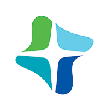When Carmen Campisi called to schedule her mammogram, she hadn't heard of the new 3-D technology, or tomosynthesis, at CHI Health Lakeside Hospital.
A spur-of-the-moment decision to try it may have saved her life.
The employee scheduling her appointment mentioned the new technology, which is only available at the Lakeside Imaging Department of the Women's Center. While the digital 2-D mammogram is considered the "gold standard" for detection of breast cancer, the 3-D technology turns 15 digital breast images into a stack of very thin layers or slices, making early detection easier.
Campisi decided to give the 3-D a try, never suspecting her tests would be positive. She had a biopsy 12 years ago and her mother died in her 80s from breast cancer but Campisi didn't consider herself at risk. She agreed to pay the extra 75 dollars for the state-of-the-art 3-D mammography.
"It's the best 75 bucks I ever invested," she said.
"This is probably the next generation in mammography," said Katie Mendlick, MD, the radiologist who read Campisi's mammogram and called her back for an ultrasound. Dr. Mendlick said 3-D mammography allows doctors to look in between overlapping tissue and improve their cancer detection rate. "This means a lot for our patients. It shows Alegent Creighton Health's commitment. We were the first to get it—a leader in the region, especially with regard to breast cancer."
After a biopsy, Campisi was diagnosed with invasive lobular carcinoma, a type of breast cancer that begins in the lobules, or milk-producing glands. The cancer cells can break out of the lobule and potentially spread to other areas of the body.
"The cancer wouldn't have shown up on the 2-D mammogram," Campisi said. "By next year when I came back for another mammogram, it could have spread."
Because the cancer was caught very early—Campisi was Stage 1—her prognosis is excellent. She had a lumpectomy, or surgery to remove cancer. "Doctors told me they got it all," she said. An Oncotype DX test helped physicians predict whether her breast cancer would return; her chances of reoccurrence turned out to be minimal. The test also helped her and her doctors choose which treatment would be best. She learned she can safely avoid chemotherapy and just undergo radiation therapy.
She expects to be tired from the treatments but is relieved. As CEO of DataFlo Consulting, Campisi has a full schedule. She's married and has two sons in their 20s, with the oldest just back from military service in Afghanistan. She's thrilled with the early detection and glad she opted for the 3-D mammogram.
"It's scary to think of what it could have been," she said.
Patients who should consider 3-D mammography are those who are at high risk due to previous cancer, currently have a lump, "dense" breast tissue or a family history of cancer.





